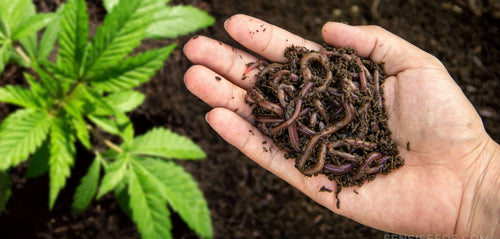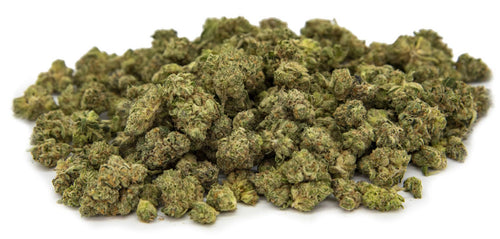#20: Behind the Hype: What's Really Happening in Canada's Cannabis Industry
#20: Behind the Hype: What's Really Happening in Canada's Cannabis Industry
As the sun rose on October 17, 2018, cannabis enthusiasts across Canada awoke to a new reality. For the first time, recreational cannabis use was legal in the country, marking a historic moment in Canadian history. Finally, after decades of prohibition, Canadians could purchase and consume cannabis without fear of legal repercussions.
The excitement around the new industry was palpable, and investors clamoured to get in on the ground floor. Billions were raised leading up to legalization day, and many believed that the green rush was just getting started. After all, Canada was the first G7 nation to legalize recreational cannabis, and it was expected that a vibrant industry would soon emerge.
Unfortunately, the reality of Canada's cannabis industry has been anything but a smooth ride. From regulatory red tape to an oversupply of products, the industry has been hit with a series of challenges that threaten its viability. If these issues are not addressed in a timely manner, the cannabis industry will be left in a state of disarray. In this article, we'll explore the issues plaguing the Canadian cannabis industry and what needs to be done in order for it to truly reach its potential.
A tale of two realities: Perceived vs. actual success

From the outside looking in, the cannabis industry in Canada appears to be thriving. With $425 million in monthly revenue, over 3,100 dispensaries across the country, and thousands of products on the market, it's easy to understand why. As a consumer, the choices and access to cannabis are seemingly endless and the price of products is more affordable than ever.
However, behind the scenes, the industry is plagued by a number of issues that could ultimately spell its demise if left unchecked. In 2021, 40% of all companies in Canada that filed for Companies’ Creditors Arrangement Act (CCAA) were from the cannabis industry. Big names such as Choom, Zenabis, Flowr Corp, Eve & Co, and Speakeasy were amongst those that filed for creditor protection. This alarming statistic speaks to the fragility of the cannabis industry in Canada and highlights the need for urgent action.
Up in smoke: The real issues plaguing Canada's cannabis industry
With the future of the cannabis industry in Canada at stake, it's important to examine the issues that have led us to this point. There is no one single issue that can be blamed, but rather a confluence of issues that have had a detrimental effect on the industry. Here are some of the biggest issues facing Canada's cannabis industry:
Federal taxes: In addition to sales taxes, there is an excise tax of $1 per gram or 10% of the value of the gram, whichever is greater. There is also a 2.3% regulatory tax on producers, which further adds to the costs of cannabis. 70% of producers in Canada are in default on their excise taxes, highlighting the financial strain of federal taxes.

Provincial government taxes: On top of the federal excise and sales taxes, provinces have their own taxes and fees to be paid by producers. These can range from a 16.8% tax for all products sold in Alberta to a 20% tax on all vape products sold in British Columbia. When combined with federal taxes, 72 cents of every dollar spent on cannabis in Canada goes to taxes or fees.
Regulatory red tape: Cannabis is one of the most heavily regulated industries in Canada, and producers must adhere to a long list of regulations in order to stay compliant. This is a time-consuming and expensive process, as producers must jump through many hoops in order to remain compliant with Health Canada's regulations. From product testing requirements to labelling rules, these regulations are often expensive and difficult for craft farmers to navigate.
Oversupply and pricing pressure: The rapid expansion of the industry due to legalization has resulted in an oversupply of products, leading to extreme price competition and a race to the bottom. In 2021, over 468 tons of cannabis, or 26% of total production, was destroyed due to oversupply and pricing pressure. This has driven down prices and put pressure on producers to lower their costs.

Large, capitalized LPs: In order to gain market share, most of the biggest licensed producers (by number of employees) have been selling their cannabis products at a steep loss. Pay-to-play schemes, where producers pay retailers for prime shelf space, have become increasingly common. Small craft farmers, who lack access to capital, struggle to compete in this environment, putting them at a significant disadvantage.
Black market: The black market still accounts for 43% of all cannabis sales in Canada. Higher potency and lower prices compared to legal cannabis make it an attractive option for many consumers. Furthermore, black market producers are not subject to the same taxes and regulations as their legal counterparts, allowing them to sell products at a 55% discount compared to legal products.
Oversaturation of retailers: The rapid growth of retail stores across Canada has created an oversaturated market in some jurisdictions. Many retail stores are failing to turn a profit due to the increased competition, exacerbating the woes of the legal cannabis industry. Massive store closures are expected in the coming months as retailers struggle to stay afloat.
Turning over a new leaf: Solutions for a thriving cannabis industry
While the Canadian cannabis industry faces a number of challenges, there is still hope for the future. By addressing some of the key issues that are affecting the industry, it is possible to create a more stable and sustainable environment. The following are some solutions that can be implemented:
Tax reform: The federal and provincial governments should reform their taxes on cannabis and reduce them significantly to make it easier for small businesses to compete with the black market and the big LPs. A proposal by Stand for Craft, a coalition of small cannabis businesses, suggests a floating and graduated tax that is based on revenue, rather than a flat rate tax. This reform would make it easier for craft growers to remain viable and compete with the big players.
Regulatory reform: The government should review and simplify the regulations imposed on cannabis businesses, making them more transparent and easier for producers to adhere to. This would help to reduce operating costs for businesses and make them more competitive in the market. By streamlining regulations, the government can create an environment where businesses can focus on innovation and growth rather than compliance.
Promotion of craft cannabis: In order to ensure the survival of craft producers, the government should promote and incentivize craft cannabis businesses. This could include introducing special designations and labels for craft products, creating an easier path for legacy farmers to obtain licenses, and supporting micro-processing and craft production through grants or subsidies.
Elimination of pay-to-play schemes: The government should work with retailers to end pay-to-play schemes that are damaging the industry. By making it illegal for producers to offer incentives or discounts in exchange for shelf space, craft producers will be able to better compete with larger players.
Loosen product restrictions: Move more people away from the black market and into legal cannabis products by loosening restrictions on product types that are not currently legal in Canada. This could include allowing producers to sell high-potency products that compete with the black market. Edibles, topicals and capsules above 10 mg of THC should be legal for sale in Canada.
With the right policy solutions, the cannabis industry in Canada can become more stable and sustainable. The key is for the government to work with producers and industry stakeholders to create a supportive environment that encourages growth and innovation. By doing so, the industry can ensure the long-term success of this nascent and exciting industry.
From challenges to solutions: How Herbal Dispatch is leading the way
Herbal Dispatch is doing its part to help bring about positive change in the cannabis industry. We face the same challenges as other producers and are committed to ensuring that we take the necessary steps to ensure our future success. As such, we will continue to strive towards creating the best possible marketplace and customer experience through innovation, collaboration, and a commitment to excellence.
We believe that a strong system of craft farmers is essential for the health of the cannabis industry in Canada. That's why we are committed to working with our farmer network to ensure their long-term success. Providing assistance with compliance, marketing, and product development are just some of the ways that we can help create a more equitable environment for small-scale producers.
Finally, we will continue to advocate for reform of the taxation and regulatory systems, as well as for more support for craft producers. A strong system of craft farmers is essential for the health of the cannabis industry in Canada, and we are committed to doing our part to ensure their long-term success. We believe that with the right policies in place, the cannabis industry can not only survive but thrive. It is our mission to ensure that this happens.
A bright future for the Canadian cannabis industry
The journey to a flourishing cannabis industry in Canada may be a long one, but there is reason to be optimistic. The industry is in a state of evolution and the right policies can help to create an environment that encourages innovation, growth, and sustainability. We believe that the future of cannabis looks bright, and we are working hard to make it a reality. Thank you for being part of our mission.












